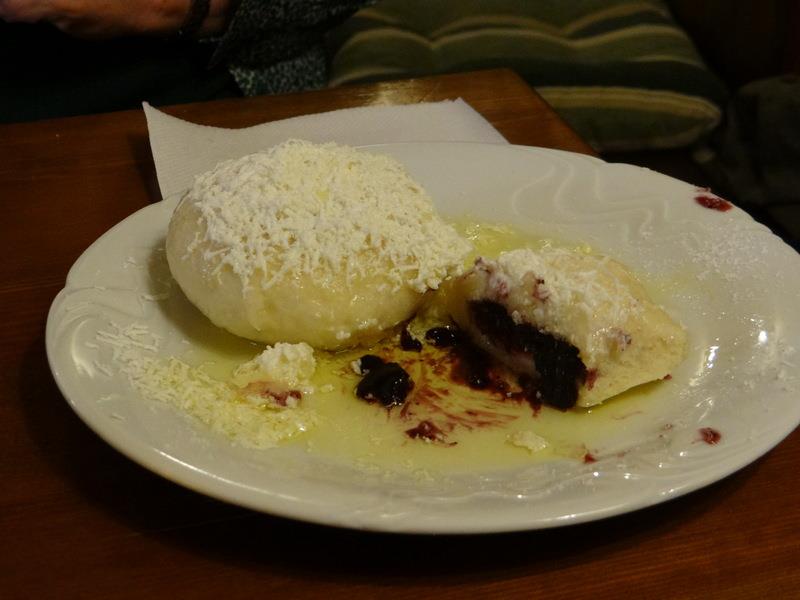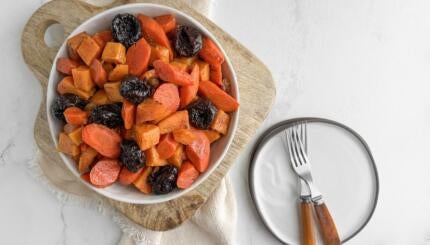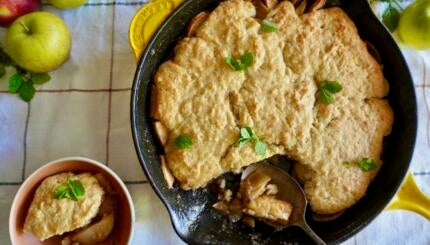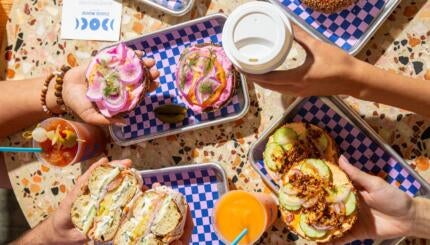Growing up, I didn’t realize that the food my grandparents served me wasn’t typical “Jewish” food. Sure, when I would visit them in Chicago they would make matzah ball soup, roast chicken and potato kugel like my friends’ grandparents did, but most of the foods I would request them to make that I considered “Jewish” were actually based on Czech cuisine. It never occurred to me that what my grandparents cooked was different than what other Jewish grandparents served my peers.
It wasn’t until I was 21 that I made my first visit to the Czech Republic. My dad and I spent two weeks exploring all that the Czech Republic (CZ) had to offer. Unfortunately, I was getting over an epic stomach bug I acquired right before flying to CZ, so I don’t remember much about the food, other than I subsisted mostly on pastries purchased at local cukrárnas (sweet shops).
This October I joined my mom and dad on another trip to CZ. This trip had special meaning, since both of my grandparents had passed away within the last three years. I was determined to pay more attention to the cuisine, indulge in some of my favorites and honor the culinary traditions my grandparents passed down to me. I decided that the best way to accomplish this was to return home with a better understanding on how to duplicate Czech cuisine here in the US.
Although I could spend pages describing the morning pastries, traditional salads and soups I fell in love with, there are two dishes I grew up on that I want to share.
The Nosher celebrates the traditions and recipes that have brought Jews together for centuries. Donate today to keep The Nosher's stories and recipes accessible to all.
The first dish I came across greatly elevates the average chicken schnitzel. Chicken breast breaded in potato pancake batter instead of crumbs or crushed cornflakes. I found this gem in a hospoda (tavern) in Pilsen, the home of Pilsner Urquell beer. The crispy, well-seasoned latke crust perfectly complimented the moist chicken breast inside. With a side of sauerkraut and a small salad (and pint of beer, of course) it is a delicious and filling meal. My dad makes the most incredible latkes, and I plan on adapting his recipe this Chanukah to re-create this culinary discovery.

My next favorite is probably one you haven’t heard of. In my family, these dumplings, called švestkové knedlíky (plum-filled dumplings) were a winter staple. The dumpling dough is a mixture of potatoes, farina (cream of wheat), and enough egg to hold the dough together. They are filled, kreplach-style, with fruit filling. The Korycan Family standard was povidla (prune butter — it was delicious, I promise you). Once boiled, the dumplings are then served with melted butter, ground walnuts and sugar. Come winter, we ate plate after plate of these delicious dumplings for dinner. Much to my delight, on a trip to a Prague grocery store I came across pre-made, packaged povidla knedlíky. I stood there and debated the pros and cons of packing them in my checked luggage, but thankfully we found similar dumplings on a menu when visiting the historic town of Telch, saving me from a potato/prune laundry disaster.
I came across many other delicious foods while in CZ that reminded me of my childhood, but those two certainly were highlights. At every breakfast, lunch and dinner I was struck by how much the local cuisine reminded me of what I perceived as “Jewish” foods growing up. There is no doubt in my mind that Czech traditions will continue to be a part of the Korycan family culinary Judaism for many generations to come.


